alone but not lonely in batanes
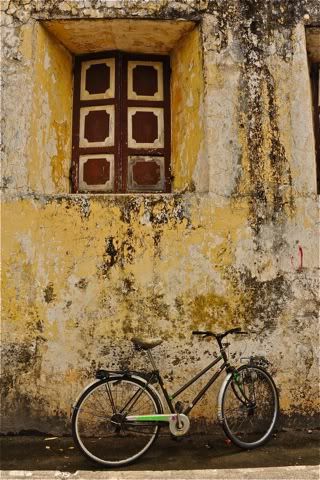
i lied. when ate delly asked me if i had ever driven a motorized scooter before, i very quickly said yes, although, i was quick to add, i needed to be reminded of the basics since it had been quite some time and i hadn't had much practice. and then i lied again. she asked me if i had a driver's license because i might be flagged and asked to show it. i flatly said that i wasn't expecting to drive around batanes so i just left it at home. it was this series of dishonest statements that paved the way for me to experience batanes the way it should be: on two wheels. in 2007, i proclaimed that this was how batanes was best explored. at the time, of course, i pedaled a bicycle and toured the islands of batan and sabtang with my friends. but seeing how i struggled with a borrowed bike that had no functioning gears, i figured that one with a motor would serve me best. and it did.
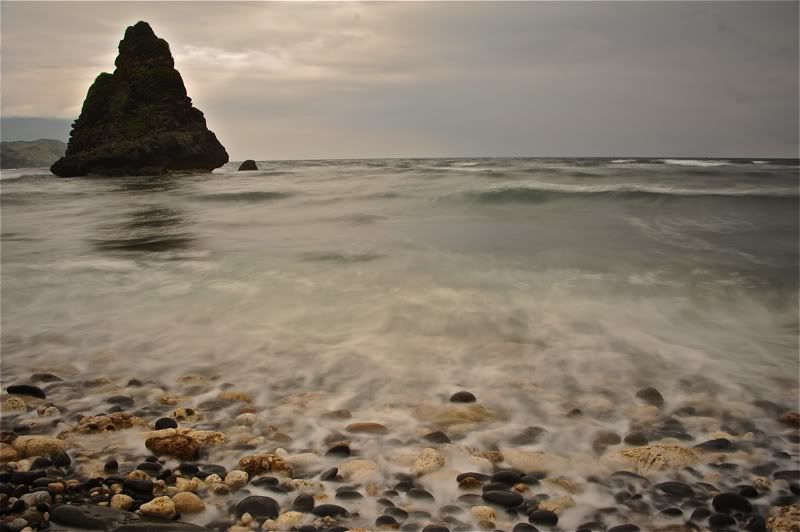
i toured batan as though i had never been there before. of course i roamed its towns on foot over the course of three days on my first time there, and became instantly familiar with details that are normally ignored by most travelers. i felt a certain attachment to little, trivial things one does not find in tired itineraries or travel books. i felt very local, and this wasn't just because the color of my skin matched that of most ivatans. and even on this third (and again solo) journey, i didn't feel like a stranger. i felt right at home. everyone paused to smile at me, honked at me, tipped their hat at me, waved at me, said good morning to me. i felt like everyone knew me. when i went up the lighthouse of diura while it rained gently outside, a local showing around a pair of sisters from manila asked if i was staying at shanedel's. i asked how he knew, and he said that my scooter was owned by ate delly. and he was not the first to have guessed where i stayed. in fact, i was so trusting of the honesty of the ivatans that i always left the keys tied to one of the handle bars of the scooter which i manipulated so well (but had difficulty starting) when i went around with my camera and tripod to shoot. i was sure no one would take it.
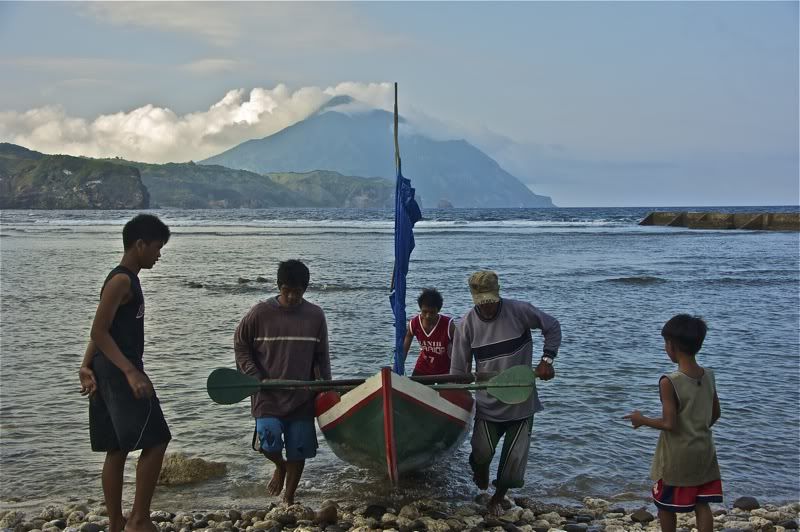
with the scooter's help, i managed to see all of of batan island in a day. i motored down to the port of diura and watched as froth retreated into the sea while mount iraya stood in the background, and fishermen returning to the shore, paddling backwards on their single-person tatayas, their little sails folded. one lucky fisherman came home with a huge dorado. a few others were not as fortunate. their sons and neighbors met them at the pebbly beach and helped carry their boats onto dry land, which they covered with a few branches of the coconut tree.
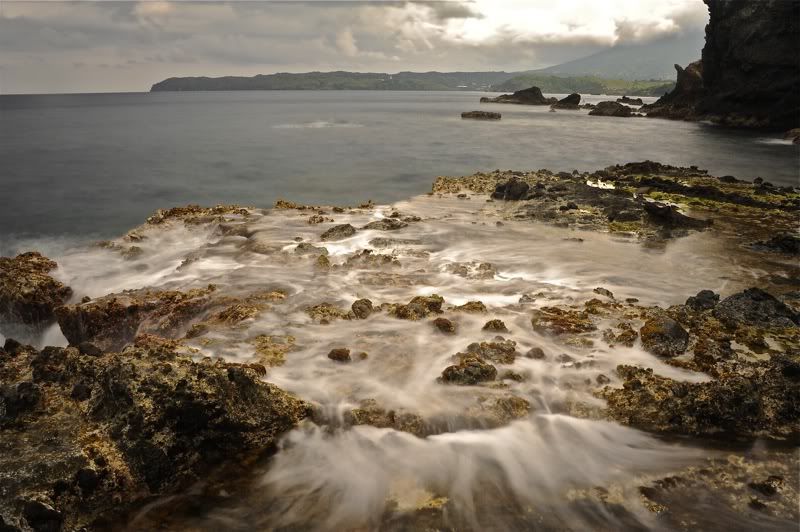
i went up to marlboro country and marveled at the view: the undulating green that swallowed me, the brooding sky that threatened my uncovered head, the undomesticated cows roaming freely in the unfenced hills. i went down to imnajbu and found the site of the first catholic mass in the islands. i drove through the towns of uyugan, ivana and mahatao, stepping on the gear when the road rose, stopping when i wanted, or where i thought either an experience, or a photo, presented itself.
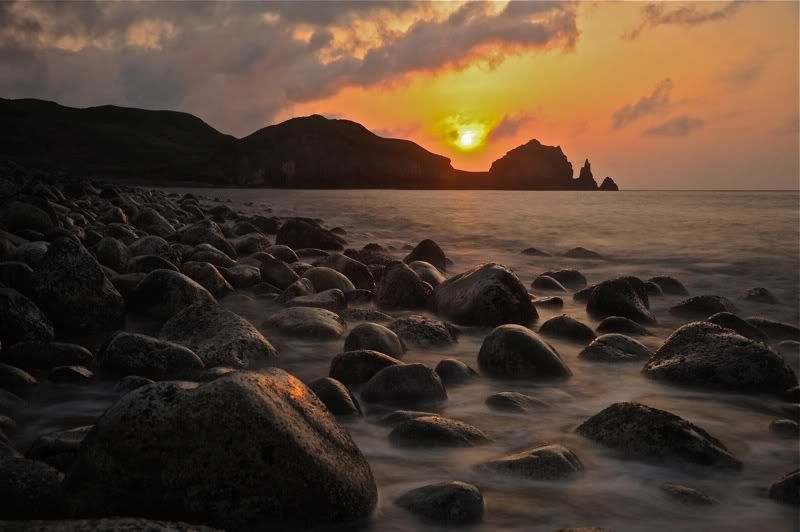
i drove up naidi hills, past the bunker café beside its white lighthouse, onto songsong bay, valugan's sibling, where i watched the sun set over the jagged fences of earth in the distance, while the sea splashed onto the rows of boulders that marked the shore. getting around on the scooter was so much easier than on the mountain bike, which failed me as i went up to visit fundacion pacita. i had been there before, marveled at the amazing view, wandered past five men coaxing two pigs to mate, but whose sexual congress was unsuccessful, due to the twain's exhaustion. there was a little store near the resort named after the late artist which paid homage to her art: it was an orange box with concentric circles in different colors.
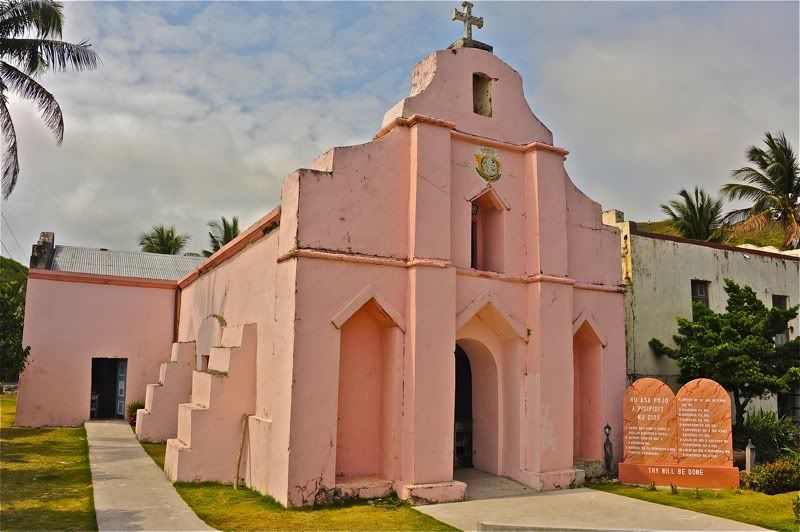
if i had a difficult time pedaling up to fundacion pacita due to unshifting gear, the descent back to downtown basco was even more terrifying: my brakes didn't work as well as i wanted, and my slippers doubled as a foot brake if i wanted to avoid injury. but regardless of how difficult or terrifying this experience was, i wouldn't trade it for the chance to see batanes this way: everything else feels contrived. you're herded into a four-wheeled vehicle much like cattle, and are taken to the same places thousands of other tourists have already seen. yes, thousands. although the batanes islands are so far removed from the rest of the philippines, access to this remote province has improved, and trips have been more or less regular. the tourism industry, it seems, is booming, and this otherwise sleepy, peaceful, laidback town, is adapting: there are 5 times the number of restaurants now than when i first came, wi-fi is available in many places, there are more cars -- particularly vans -- plying the highway, and tour guides are as many as the stone houses that lay in ruin.
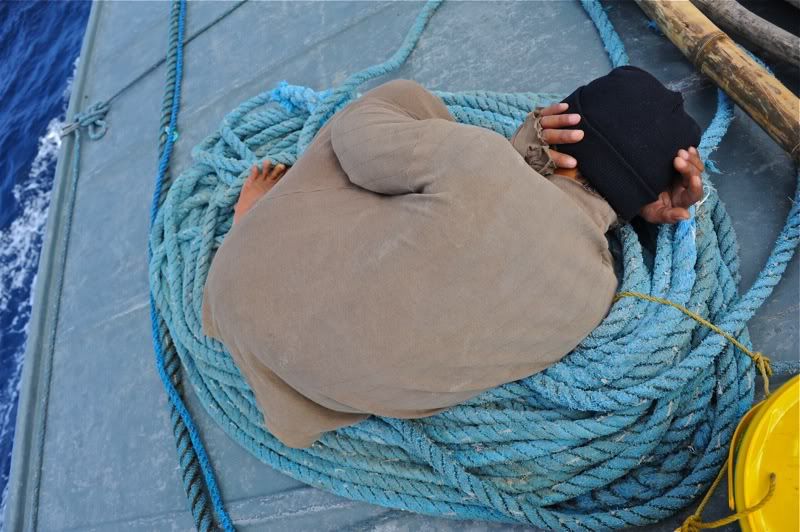
on this third trip to batanes, i resolved to visit the island of itbayat: the northernmost municipality in the philippines. on a clear day, it is possible to see the dark outline of the island from the shores of songsong bay. on all other days, it is as if it isn't there, or that it lies so far away, it may very well be another country -- a feeling that all the habitable islands of batanes often suggest to many visitors. after a hasty early morning tour of valugan bay to view the sunrise, where i broke my bike chain on the way back and had to hitch with a passing motorbike by holding on to the backseat, i caught one of the two trips to itbayat. i had been told that it would be a dizzying ordeal in tempestuous waters. but parts of the three-hour journey, while the sun fell in vertical shafts of light over mount iraya, was actually peaceful, so much so that i managed to soak sun and sea on the falowa's roof.
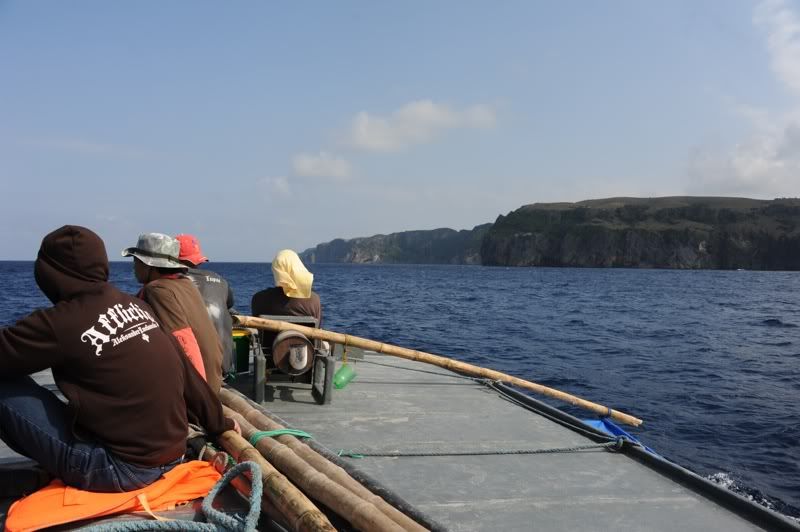
underneath me, other passengers unrolled mats and transformed orange life vests into pillows. the ship's crew uncoiled reels into the water in the hope that a dorado would bite the colorful hook disguised as a squid. every now and then, startled flying fish would skim over the water's surface when we passed. beside me, locals were opening plastic biscuit cans containing breakfast and a few sticks of cigarettes. somewhere between itbayat and batan, neither island was visible. i was floating helplessly in the deep, frothy sea and it was obvious that the captain was navigating the wooden falowa reinforced with layers of gray epoxy based on a hunch. when finally itbayat appeared, it rose steeply from the sea, sometimes 30 persons high. it has no shore. upon closer inspection, it was clear that the average altitude of the town was upwards of 45 meters above sea level, surrounded completely by steep drops and characterized by jagged karst formations. there are some piers around the island: clumsy ports jutting out onto the terrible tide, leading to steps winding up a hill.
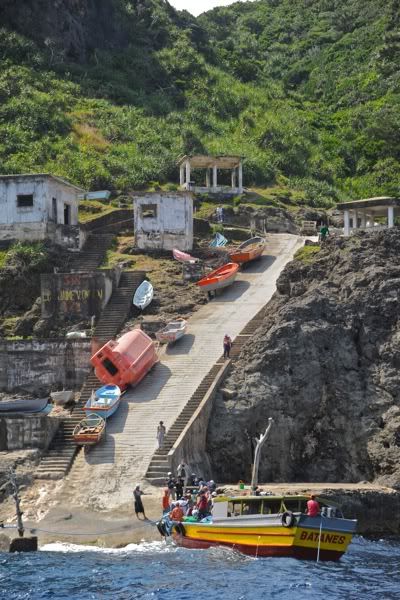
the main pier -- chinapoliran -- is a steep driveway angled at slightly less than 50 degrees. getting the falowa moored was a busy, nearly herculean, task that involved several people working together. getting people off the boat and onto concrete was an exercise in balance in timing. the falowa bobbed crazily as the sea spun underneath it, so passengers were literally thrown off the bow, hoping they wouldn't become flotsam. i didn't want to suffer the indignity of being treated like cargo, so i volunteered to jump off the unsteady ship. i walked up the giant steps and looked back as drums of fuel intended for the cellsite were being rolled up the slope. it looked nearly impossible. and yet, they managed to get motorcycles, cars, trucks, constructicons up to the town. even when i saw the pulley that scarred the concrete road, i still could not help but marvel at the logistics involved in getting even just one mammoth of a machine onto the island. it was somewhat their version of "extreme engineering".

i had made no plans about itbayat. i had not even bothered to read about it. so i didn't know where to go, nor what to do. i asked a passing motorist how far away the town was and he said 2 kilometers. so i decided to walk. but under the batanes sun, that inaccurate distance was torture, and by the time i reached a store where i drank a soda, i was completely drenched in sweat. i asked a local woman if she knew a place where i could stay and she bothered herself to call up people for inquiries. finally, she introduced me to a member of the town council who offered me bedspace at the barangay hall. i was longer than the foam of the bunk bed but was happy to find accommodations in a place where pension houses are scarce.
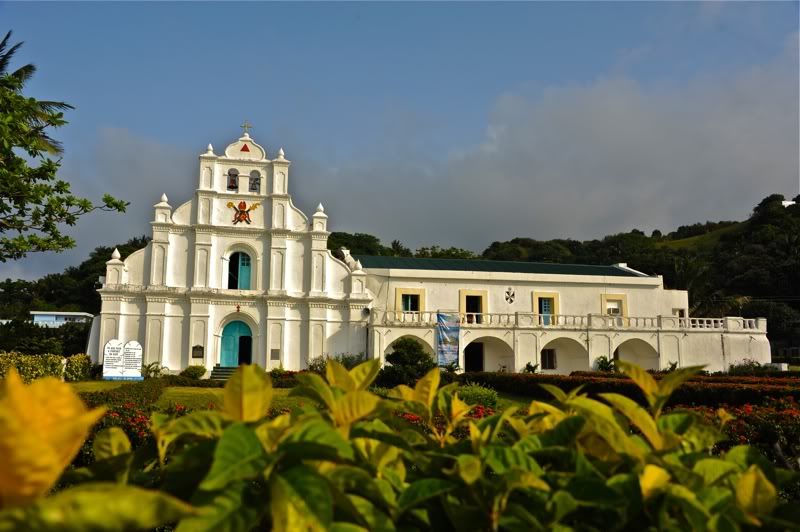
after a late morning snooze, i was invited to lunch nearby. one of itbayat's prodigal daughters had returned and the entire barangay was invited for a quiet feast. there was an efficient assembly line in place. women cooped in a dark room cooked food, while outside, men arranged rice, boiled pork, minced meat in curdled pig's blood, and an unnamed dish made with the banana's heart on a broad leaf of the bread fruit tree. it was called kabbaya, and it was less worse than the unseasoned chunks of pork i once had following a cañao, but nonetheless, if i hadn't been given a heaping helping, i probably would have finished all of it, out of courtesy rather than hunger.
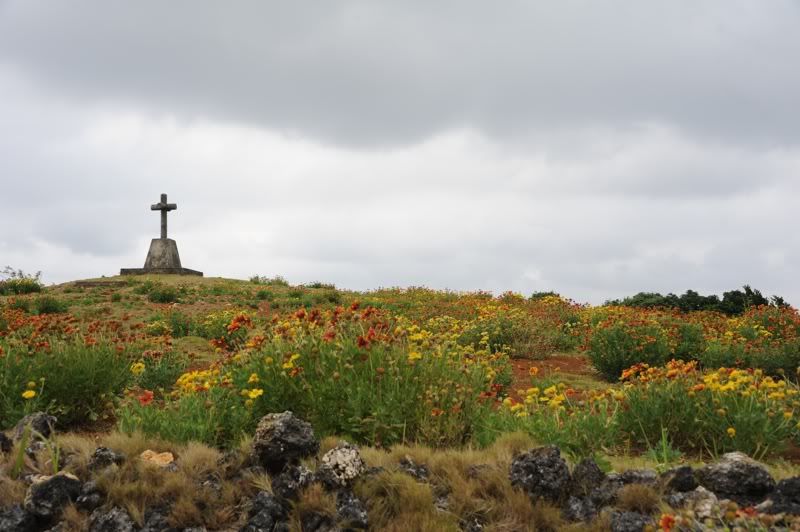
after that strange but interesting meal, my instant host took me for a ride around town. we drove to one of its fish ports where he had to ask me if i had a fear of heights. i assured him that i know all about steep places, and it was unfortunate that we didn't chance upon a bayanihan of fishermen parking a medium-sized tataya up the inclined concrete path. i also visited the town's catholic cemetery which looked more like a garden than anything else: save for the strange-looking cross, there were no tombstones marking the graves. only pieces of wood containing the deceased's name. the older ones have all withered, and judging by the number of markers, not many people have died in itbayat, or perhaps, not many people were buried there.
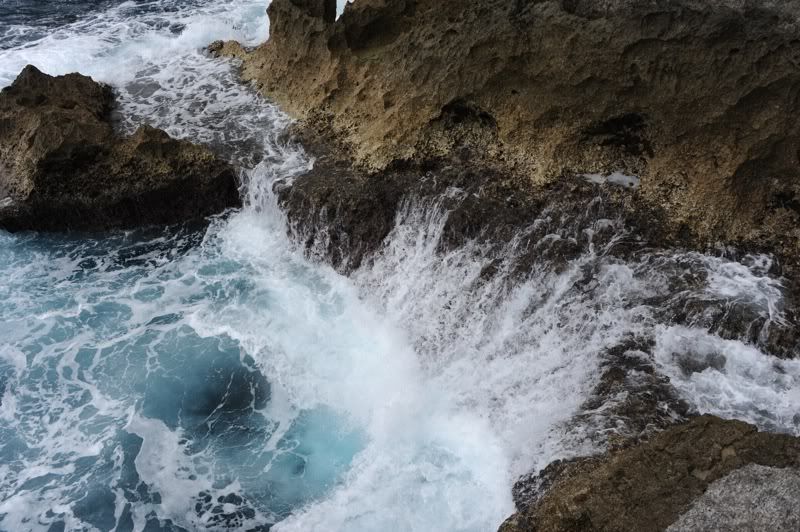
that night, after my host insisted that i stay another day so i can savor the other sites accessible only by four-wheeled vehicles, i got invited to dinner and a drinking session. we sat around a wood fire. a huge black pot sat over the flame: it has been there for three days, and will be kept boiling for another four. the lady of the house awoke every few hours at night to ensure the burn. the wind blew that evening and i felt very cold. one of the locals left and reappeared wearing a sweater, and the young man based in manila whose favorite expression was "what the heck!" insisted that he give up the warm jacket for me. i wore until they tipped over 6 GSM bilogs.

the following day, i rose early for the easter sunday dawn mass. the barangay hall was 5 minutes away from the church, but the mass could be heard all around town: strategically-placed speakers ensured that all of itbayat was proselytized, or blessed, even when they were too lazy to leave their homes. the mass took place on the lawn outside the chapel. itbayat's faithful came in their sunday's best: ancient women in lace veils and nearly uniform white tops and dark skirts sat on the grass right in front of the priest's podium. they wore odd-looking scapulars that resembled mystical objects rather than religious items. beautiful children in white were given a special place, and the few tourists present attended even though the homily was said completely in ivatan.
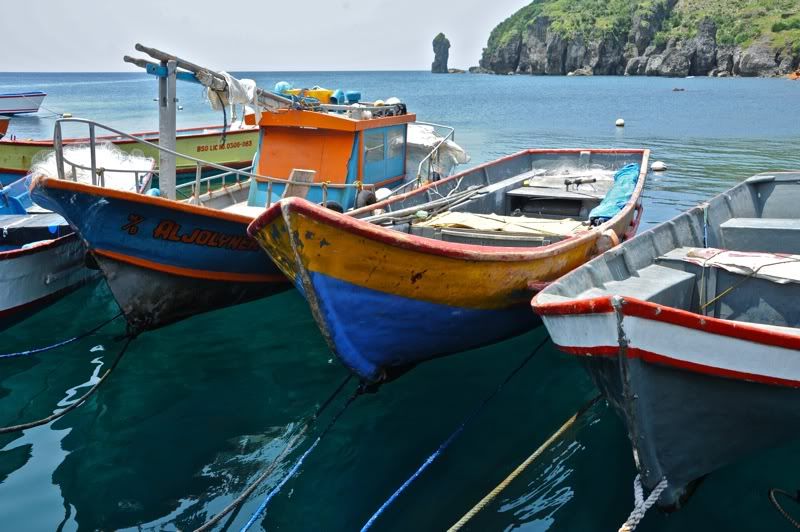
after the mass, i walked home while everyone greeted me a happy easter. i didn't know if there was space available for me in the flight back home, but while i walked the narrow road, a pick-up whisked me away to the airport, which only recently re-opened after a nearly 3-year hiatus. the 800 meter runway had just been upgraded with a stretch of concrete. the 6-seater plane looked like it had no place in the sky. it seemed better suited for an aviation museum. with some trepidation, i strapped myself inside, and we flew, accompanied by the sick whirr of the twin propellers. itbayat quickly shrunk into a chunk of rock in a giant pond, although we flew no higher than 5,000 feet and no longer than 10 minutes. i was back in shanedel's by 9:30AM, after stopping by hero's for a disappointing breakfast.
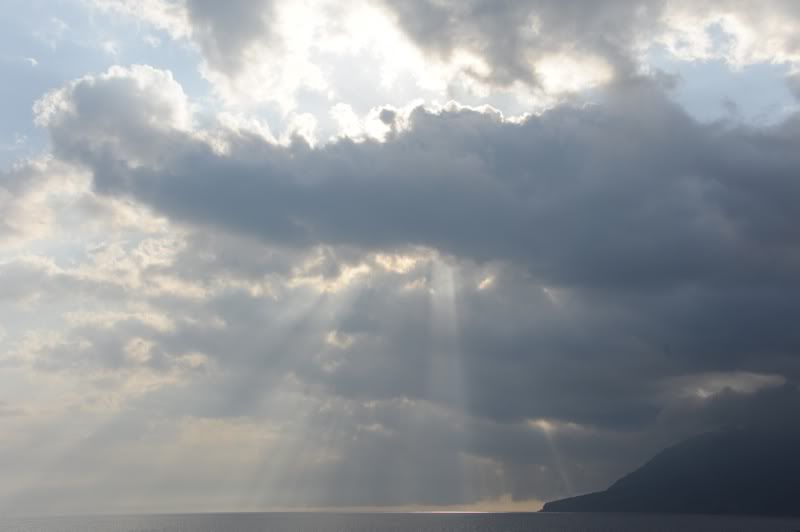
on my last day in batanes, i met other solo travelers, all drawn by the islands' mystique and mystery, by stories taller than mountains not found here, deeper than trenches that churn the sea. i told them that i am not a first-time visitor, and they asked why i kept returning. i replied by saying that if the flights to batanes were cheaper and more predictable, i would probably have visited more often. but having been there more than once not only allows me the privilege of a previous experience -- which is a better guide than most books and tour operators who have no original ideas -- but also lends me with the sometimes uncomfortable ability to compare.
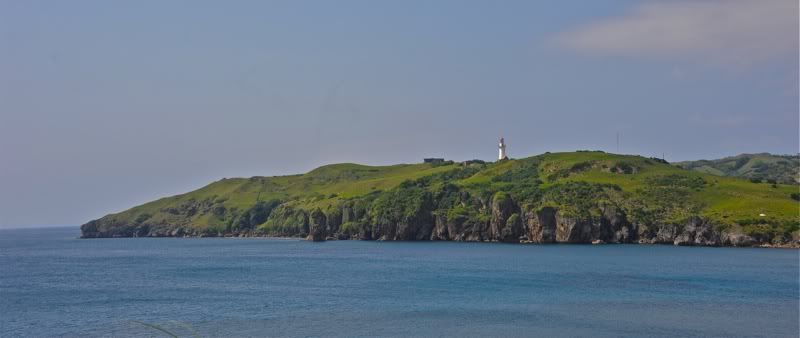
batanes is changing, physically. the number of cars on its narrow streets has multiplied enormously since i was last there. stone houses with their water-battered building blocks are being abandoned, left to rot and ruin in favor of more modern materials and methods of construction, although its rugged coasts still remain unmoved and tell the same stories from many centuries ago. whether batanes will succeed in having itself inscribed in UNESCO's list of world heritage sites depends on how long the ivatans will hold on to the thing that makes them unique. unfortunately, most of these things are intangible, or too small that they fall through the gaps between their fingers. the batanes of my first visit from 8 years ago or even 4 years ago, is not the same as the batanes of this third journey. i remember it differently, and i can't say with absolute certainty that i am happy to witness how it has evolved, particularly its mode of evolution. so i thank the blessing of nostalgia. because the memory i have of batanes keeps me bewitched with its savage charm and immeasurable kindness. one must come here without expectations, without assumptions: only a readiness for all things awesome, amazing, and breath-taking.